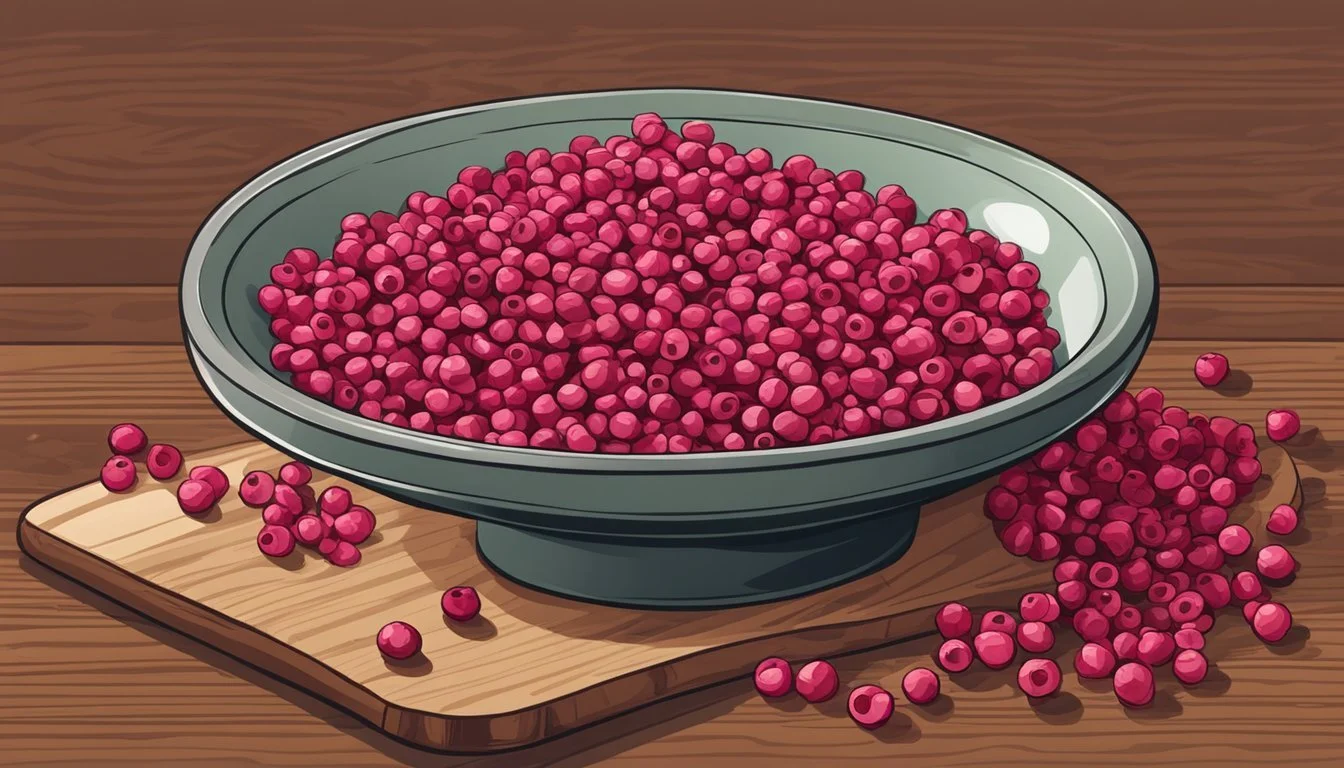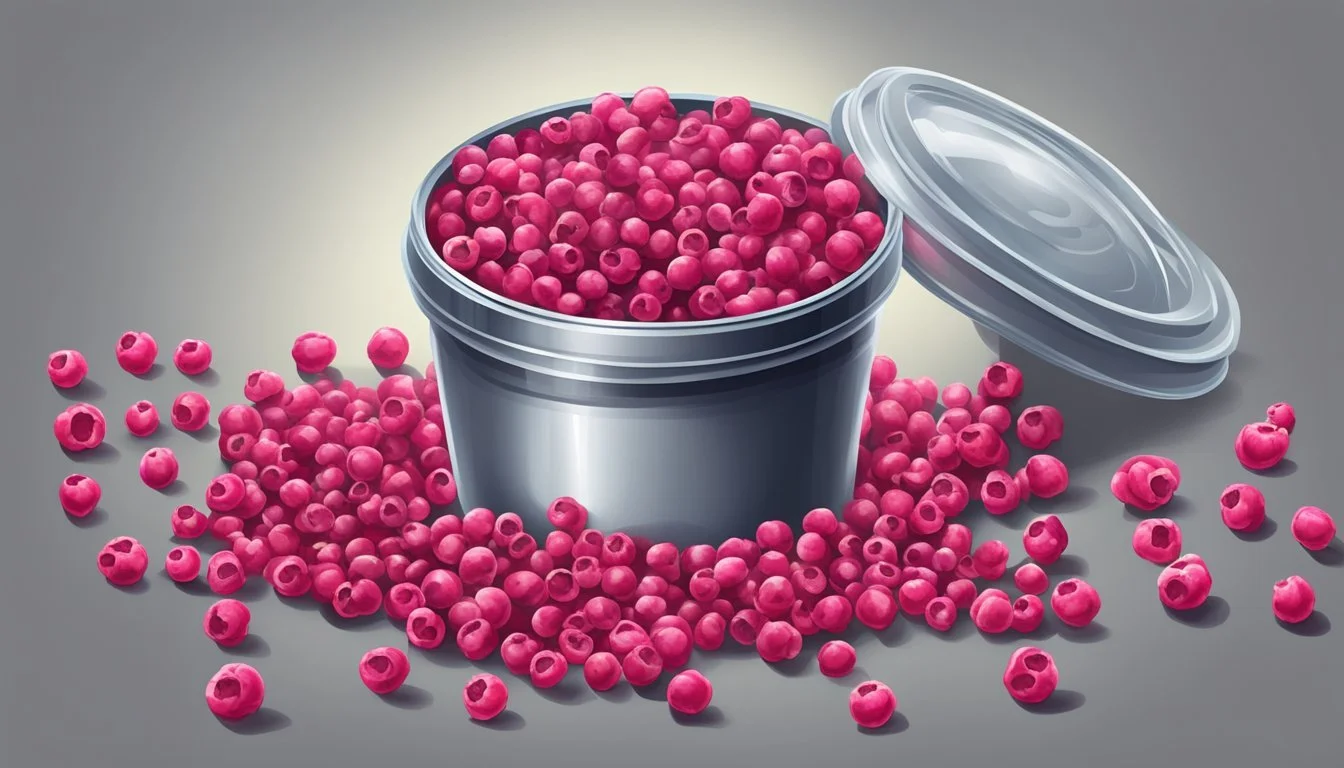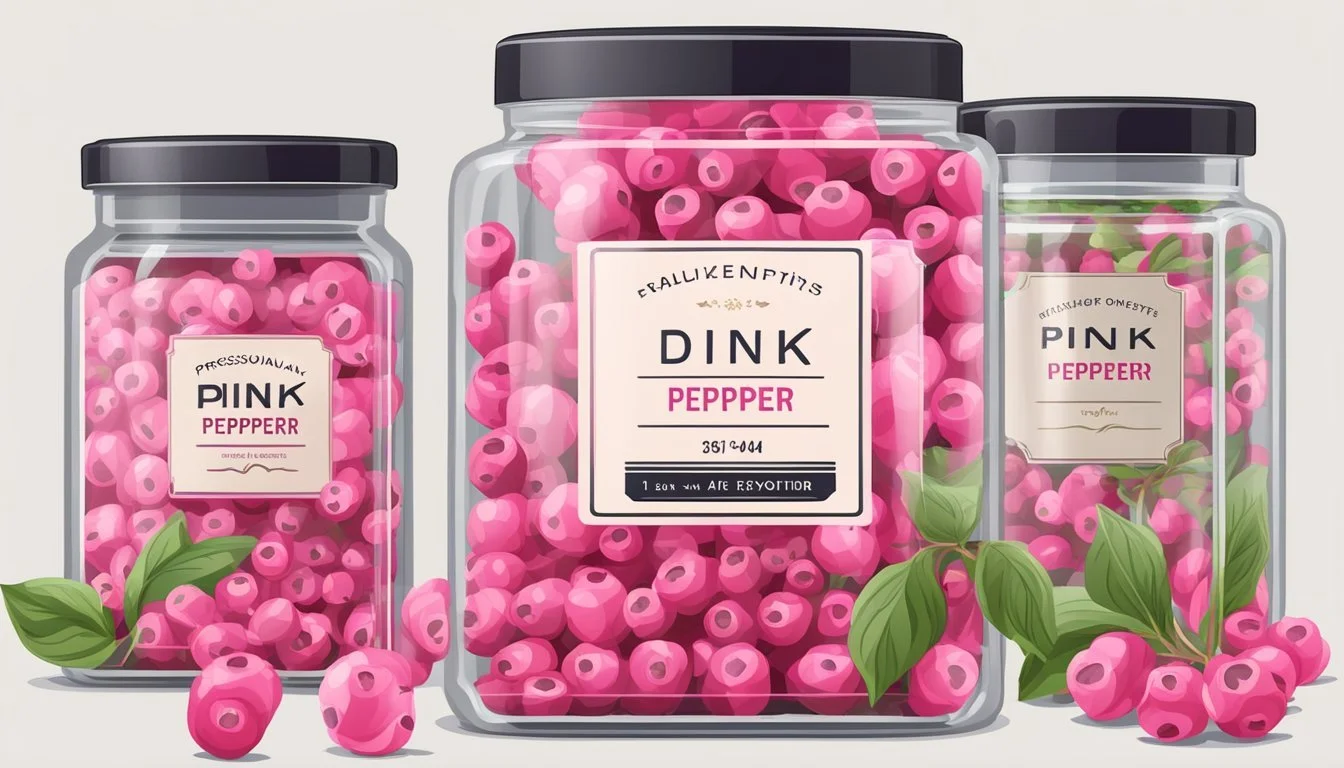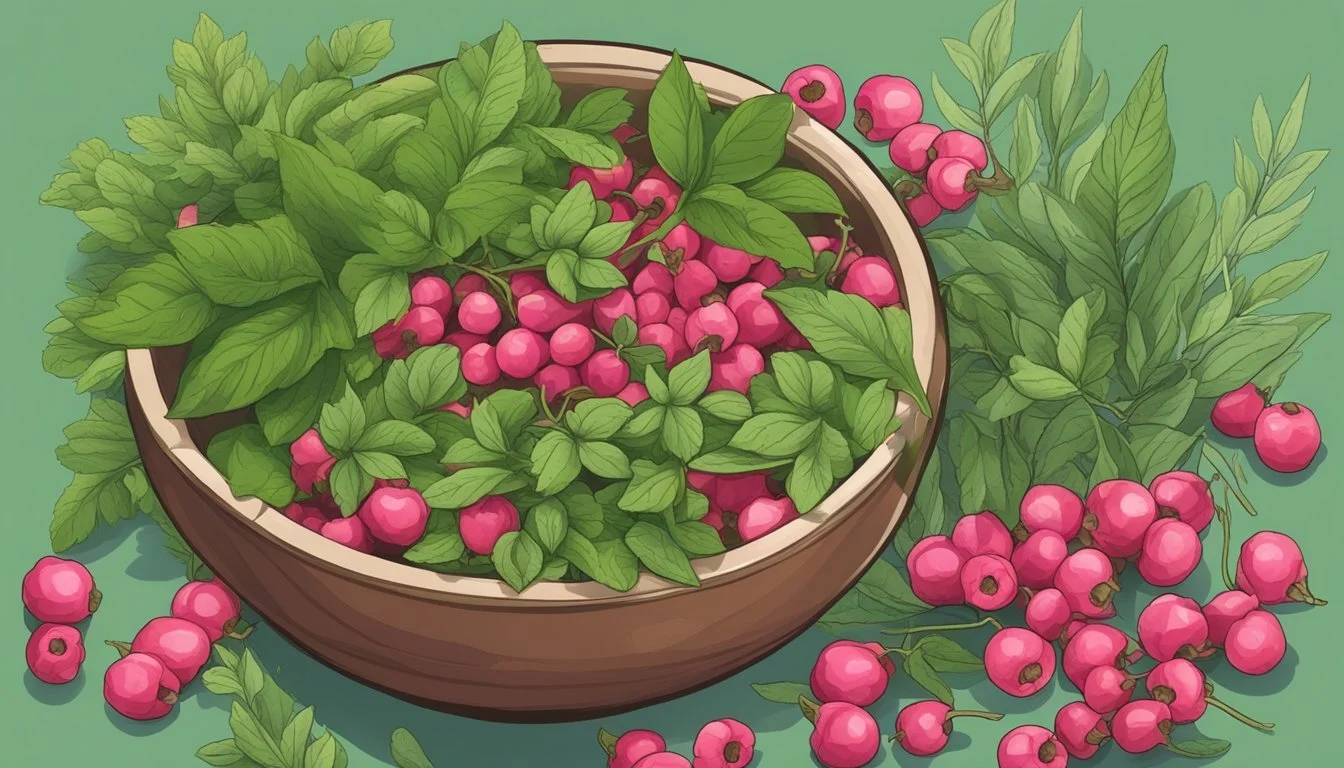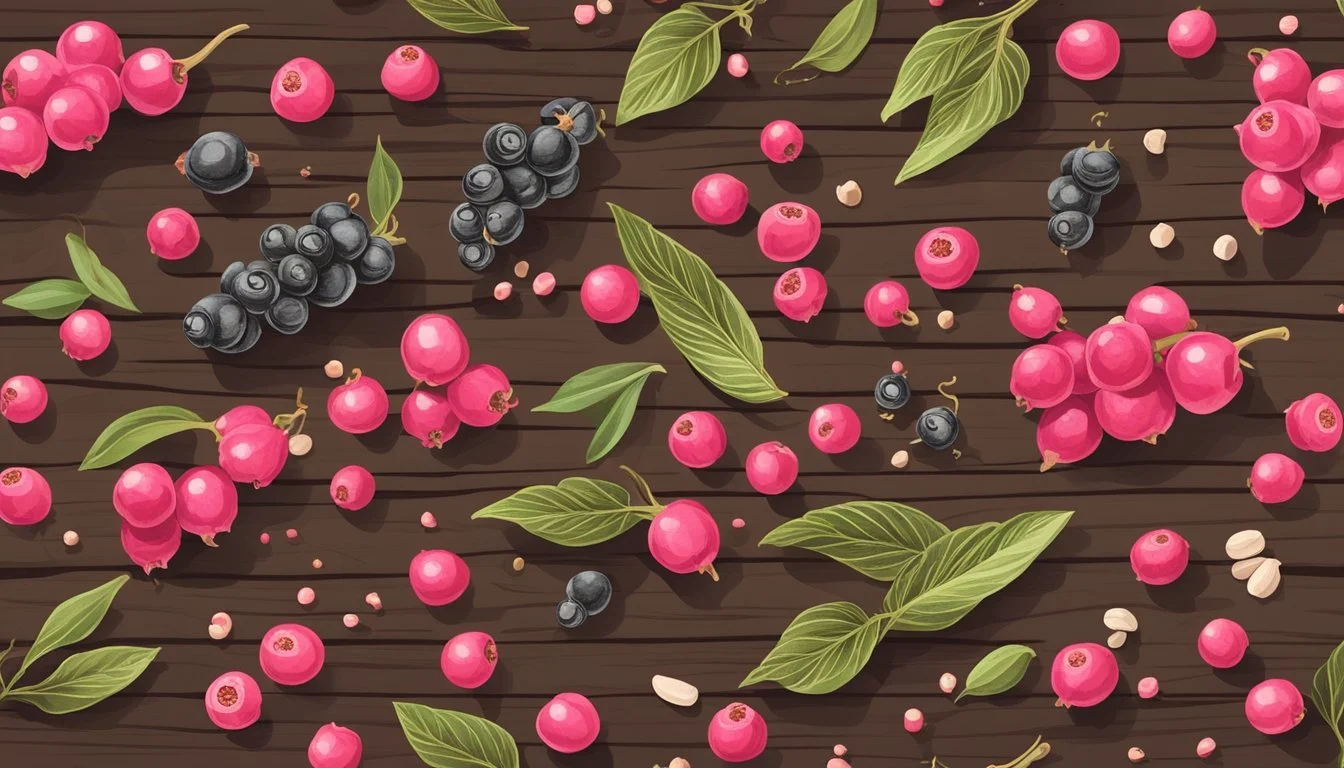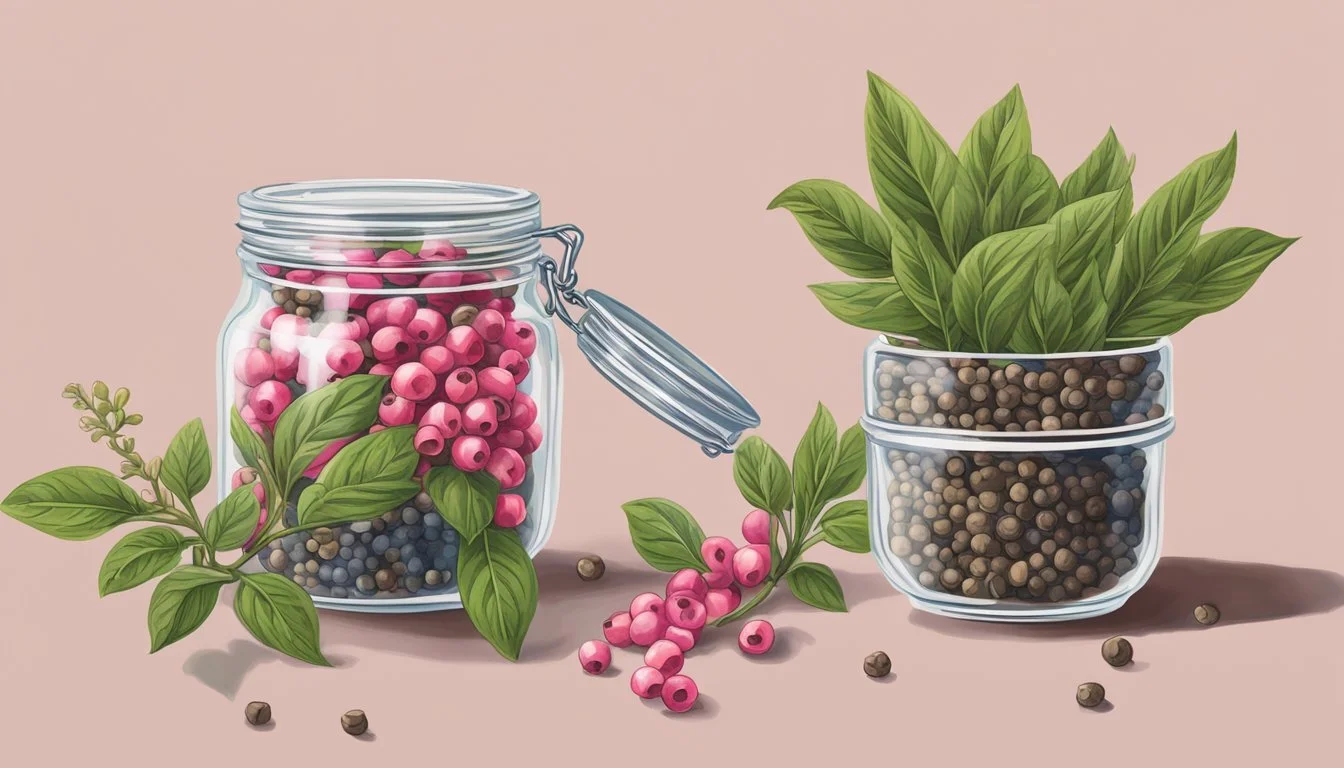Do Pink Peppercorns Go Bad?
Shelf Life and Storage Tips
Pink peppercorns are a unique spice, known for their delicate sweetness and fruity notes. These vibrant berries are often used to add color and subtle flavor to a variety of dishes. Though they differ from traditional black peppercorns, they still need proper storage to maintain their freshness.
Pink peppercorns can go bad if not stored properly. Signs that they are no longer suitable for use include a loss of color, the development of mold, and a musty or rancid odor. When stored in airtight containers away from light and heat, they can retain their flavor for an extended period, typically up to several years.
To keep pink peppercorns fresh, store them in a cool, dry place, and avoid exposure to moisture and strong odors. While their shelf life might be impressive, always check for changes in texture and aroma to ensure you're using the best quality spice in your culinary creations.
Understanding Pink Peppercorns
Pink peppercorns are not true peppercorns but the dried berries of two species: Schinus molle (Peruvian pepper tree) and Schinus terebinthifolius (Brazilian pepper tree). Despite their name, they are part of the cashew family, closely related to poison ivy.
These berries have a fruity, floral flavor that differs from the typical heat of black pepper (Piper nigrum). They offer a unique spicy-sweet taste profile, often used to complement both savory and sweet dishes.
Originating in tropical regions, pink peppercorns are known for their vibrant color and softer texture. When used fresh, they add a burst of brightness to recipes.
Characteristic Detail Botanical Name Schinus molle, Schinus terebinthifolius Flavor Profile Fruity, floral, spicy-sweet Common Uses Culinary, decorative Storage Tightly sealed, non-porous jar
Culinarily, these ripe berries pair well with fruits like strawberries and pineapple, and they enhance the flavors of dishes that feature citrus elements.
It's important to note that both types of Schinus are considered invasive species in some regions. Caution is advised when handling them as they may cause allergic reactions in sensitive individuals due to their relation to poison ivy.
In summary, pink peppercorns are admired for their distinctive taste and versatile culinary uses. Proper storage ensures they remain fresh and flavorful.
Varieties and Comparison
Peppercorns come in various colors and types, each with unique characteristics. Understanding these differences will help in selecting the right pepper for various culinary needs.
Types of Peppercorns
There are several types of peppercorns, including:
Black Peppercorns: Known for their strong flavor and aroma, black peppercorns are an essential spice. They are often used whole or ground.
White Peppercorns: Milder than black peppercorns and often used in dishes where a uniform color is desired.
Green Peppercorns: Harvested before they ripen, green peppercorns have a fresh, herbaceous flavor.
Red Peppercorns: Rare and often dried, adding a fruity and spicy note to dishes.
Pink Peppercorns: Not true peppercorns but come from the berries of the Peruvian pepper tree. They have a sweet and floral taste.
Each type offers a distinct culinary experience.
Pink Peppercorn Characteristics
Pink peppercorns are unique among the peppercorn varieties. Unlike others, they are not from the Piper nigrum plant but from the Peruvian pepper tree (Schinus molle).
They are known for:
Flavor: Sweet, fruity, and slightly peppery.
Appearance: Small, pink berries that add visual appeal to dishes.
Usage: Often used in salads, desserts, and as a garnish.
Due to their delicate nature, it’s best to crush them gently rather than grinding. Their mild flavor makes them a versatile ingredient in both savory and sweet dishes.
Distinguishing Between Peppercorn Colors
Peppercorn colors can be distinguished by their appearance and flavor profiles:
Black Peppercorns: Dark and wrinkled, known for their robust flavor.
White Peppercorns: Smoother and paler, with a less pungent taste.
Green Peppercorns: Bright and often brined or dried, providing a fresh taste.
Red Peppercorns: Retain their red color even when dried, adding spiciness and fruitiness.
Pink Peppercorns: Pink in color, sweet, and floral, unlike the true peppercorns.
Each color not only adds different visual elements to dishes but also offers varied taste experiences. Proper storage is crucial for maintaining their flavor and aroma.
Flavor Profile and Culinary Uses
Pink peppercorns offer a unique blend of floral, fruity, and peppery notes. These diverse flavors make them versatile in both cooking and garnishing tasks.
Pink Peppercorn Flavor
Pink peppercorns are not true peppercorns but are derived from the berries of the Peruvian pepper tree (Schinus molle) and Brazilian pepper tree (Schinus terebinthifolius).
They possess a floral and fruity flavor profile with peppery undertones. The mild heat they provide is balanced by their sweet nuance, making them distinct from traditional black, white, or green peppercorns.
Cooking and Recipe Applications
Pink peppercorns can be incorporated into various dishes, thanks to their adaptable flavor. They are ideal for light, creamy, and citrus-based dishes, including chicken and seafood recipes.
Crushing or grinding them just before cooking preserves their freshness and potency. They serve well not only in soups and sauces but also as a vibrant garnish.
Pairing with Foods
Due to their unique flavor profile, pink peppercorns pair well with both sweet and savory ingredients. They enhance the taste of meats like chicken and seafood, as well as salads and vegetable dishes.
They are particularly compatible with citrus fruits, strawberries, and dairy products like butter and cream. Integrating them with other herbs and spices opens up a wide array of culinary possibilities in diverse cuisines.
Proper Storage and Care
To keep pink peppercorns fresh and flavorful, take proactive measures to protect them from detrimental elements. Following specific guidelines can enhance their longevity and maintain their quality.
Protecting from Heat, Light, and Moisture
Heat, light, and moisture are primary adversaries of pink peppercorn freshness. Exposure to heat can lead to a loss of essential oils, reducing the spice's aromatic strength. Similarly, light can cause discoloration and degrade flavor. It's best to store peppercorns in an airtight container to shield them from humidity, which can introduce mold.
Store the container in a cool, dark place, far from direct sunlight and kitchen heat sources like ovens or stovetops. This helps in preserving the peppercorns' quality for a longer duration.
Ideal Conditions for Storage
Airtight containers are crucial for maintaining the peppercorns’ freshness. Glass or ceramic jars with tight seals are ideal as they prevent air from entering. Cool temperatures are preferable, with a pantry being an excellent storage location.
Target a temperature range around 60-70°F (15-21°C). Avoid storing in areas with high humidity to prevent spoilage. Keeping the peppercorns in darkness further prevents light-induced degradation.
Ground vs Whole Peppercorn Storage
Whole peppercorns maintain their freshness and flavor longer than ground pepper. Once ground, the spice's essential oils begin to deteriorate rapidly. It's advisable to grind peppercorns only as needed to ensure the best flavor in culinary applications.
For those who prefer the convenience of ground pepper, store it in small amounts and always in an airtight container. Whole peppercorns, stored correctly, can last for years, while ground pepper may lose its quality in a few months.
Refrigeration and Freezing Options
Refrigeration can extend the shelf life of pink peppercorns, especially in humid environments. Place the airtight container in the refrigerator to maintain a consistent, cool temperature.
Freezing is also an option, but it should be done carefully. Freeze the peppercorns in an airtight container or a vacuum-sealed bag. When ready to use, allow them to reach room temperature before opening the container to avoid condensation, which can introduce moisture.
By adhering to these storage practices, one can significantly prolong the quality and enjoyment of pink peppercorns.
Determining Freshness and Potency
Understanding the freshness and potency of pink peppercorns is essential for maintaining quality in cooking and seasoning. Specific indicators such as aroma and flavor can guide you towards determining if your peppercorns have retained their best qualities.
Indicators of Freshness
Fresh pink peppercorns have a vivid color and a robust, pungent aroma. The brighter the color, the more likely they are to be fresh.
Examining the peppercorn's surface can also provide clues. If they appear dry or shriveled, they might be past their prime. Freshness correlates with how well they have been stored; keeping them in an airtight container away from light and moisture preserves their quality longer.
Aromatics and Flavor Loss
Over time, the essential oils in pink peppercorns can volatilize, resulting in a loss of pungency and flavor. Grinding a few peppercorns and smelling the ground product can reveal much about their state. If the aroma is faint or weak, the peppercorns have likely lost their potency.
When used in cooking, pink peppercorns should impart a strong, distinctive flavor. Diminished taste means the oils have degraded. Proper storage can slow this process. Use sealed containers and store them in a cool, dark place to retain their aromatic properties and flavor.
Health Benefits and Nutritional Value
Pink peppercorns offer a range of health benefits. They are known for their decongestant and antiseptic properties, making them useful in treating flu, colds, bronchitis, and sinusitis. Their potential to boost immunity comes from their toning and stimulating effects on circulation, which can strengthen the immune system.
Nutritional Value:
Calories: Pink peppercorns have very few calories, with an average serving containing fewer than 5 calories.
Antioxidants: The spice contains antioxidants, which help combat oxidative stress and may support overall health.
They contain vitamins and minerals in small amounts that contribute to their beneficial effects.
Medicinal Properties:
Anti-inflammatory: Pink peppercorns may help reduce inflammation, offering relief from various inflammatory conditions.
Antiseptic: Their antiseptic properties make them useful in treating minor wounds and infections.
Their delicate and fruity flavor with a subtle peppery kick enhances various dishes, providing flavor without adding significant calories. Pink peppercorns can be a valuable addition to a balanced diet, contributing both taste and health benefits.
Shelf Life and Expiration
Pink peppercorns, like many spices, have a long shelf life when stored properly. It is important to recognize signs of spoilage to ensure optimal quality.
Expected Shelf Life
Whole pink peppercorns can last up to 3-4 years if stored in a cool, dry place and kept in airtight containers. Over time, they may lose flavor and aroma, especially if exposed to light or moisture.
Ground pink peppercorns have a shorter shelf life due to their increased surface area, typically retaining peak freshness for about 1-2 years. Signs of spoilage include loss of color, a musty or rancid odor, and changes in texture, such as becoming soft or crumbly.
Proper storage can extend their usability, preserving both flavor and texture. Keep them away from direct sunlight and heat sources to maximize their shelf life. Always check for the expiration dates on packaging and look for any signs that the peppercorns have gone bad to ensure quality in your culinary creations.
Historical and Cultural Significance
Pink peppercorns, originating from the Peruvian pepper tree (Schinus molle), have a rich history that spans several continents.
In South America, specifically Peru, these berries were utilized by ancient civilizations for both culinary and medicinal purposes. They formed part of traditional dishes and home remedies.
During the spice trade's height, pink peppercorns were highly valued. Unlike traditional pepper (Piper nigrum), these peppercorns provided a unique taste with floral notes and a light fruitiness. This made them distinct and sought after.
In Madagascar, pink peppercorns are not native but have adapted well to the local environment. Malagasy farmers now cultivate them, adding economic value to the region. Their robust flavor profile integrates seamlessly into local flavors.
Pink peppercorns are also known for their significance in traditional medicine. Indigenous peoples used them to treat various ailments, relying on their anti-inflammatory and antibacterial properties.
Modern culinary practices have embraced pink peppercorns for their versatility and unique taste, which contrasts sharply with the more common black peppercorns. This spice is now found globally, from high-end restaurants to home kitchens, enhancing dishes with its delicate yet robust profile.
The presence of pink peppercorns in perfumery showcases their cultural significance beyond the kitchen. The spicy and floral aroma is a sought-after component in modern fragrances, demonstrating their lasting appeal.
Recognizing and Addressing Spoilage
Pink peppercorns are a versatile ingredient, adding unique flavor to dishes.
To ensure this spice remains effective, it's essential to watch for signs of spoilage. Mold growth is a clear indicator that they should be discarded.
If they appear discolored or emit an off smell, their quality has deteriorated.
Maintaining freshness requires proper storage. Keep them in an airtight container, away from direct sunlight and moisture.
Using these methods can help extend their shelf life and preserve their taste and aroma.
Regularly check your stock and replace any peppercorns that show spoiling signs.
Scattering some freshly ground pink peppercorns onto your meals ensures the best culinary experience.
Sourcing and Sustainability
Pink peppercorns are primarily sourced from regions with tropical climates. The trees they grow on, known as Schinus molle and Schinus terebinthifolius, flourish in warm temperatures.
Although not true peppercorns, these berries are harvested and dried for culinary uses. They add a unique, fruity flavor to dishes, enhancing both sweet and savory recipes.
One challenge with pink peppercorns is that they can become invasive species. Their ability to thrive in various environments means they can outcompete local flora, potentially disrupting ecosystems.
To mitigate this, sustainable sourcing practices are essential. Suppliers often work with local communities to ensure that harvesting methods do not harm the surrounding environment.
Additionally, traditional practices involve hand-picking the berries to avoid damaging the trees. This helps maintain the ecological balance and supports local economies.
Many suppliers also emphasize fair trade practices, ensuring that workers receive fair compensation. This is crucial for promoting ethical sourcing and sustainability.
The demand for sustainably sourced ingredients highlights the importance of responsible harvesting. Consumers and suppliers alike play a role in supporting these practices, ensuring that pink peppercorns remain a viable and environmentally friendly option for culinary uses.




